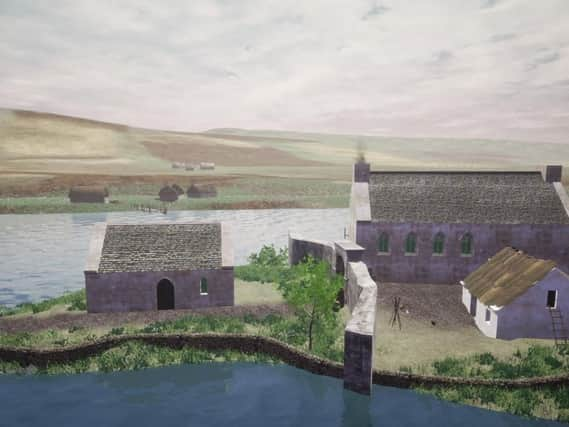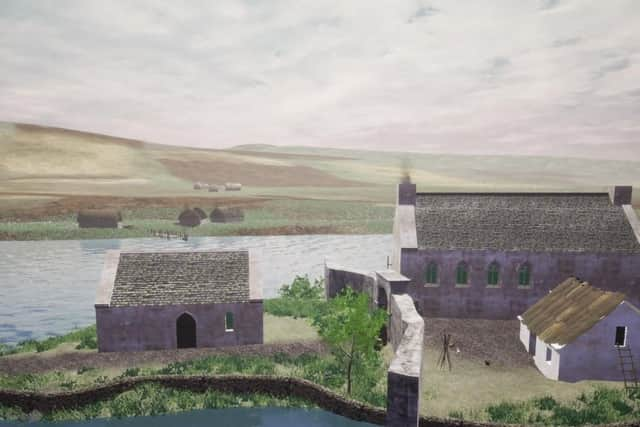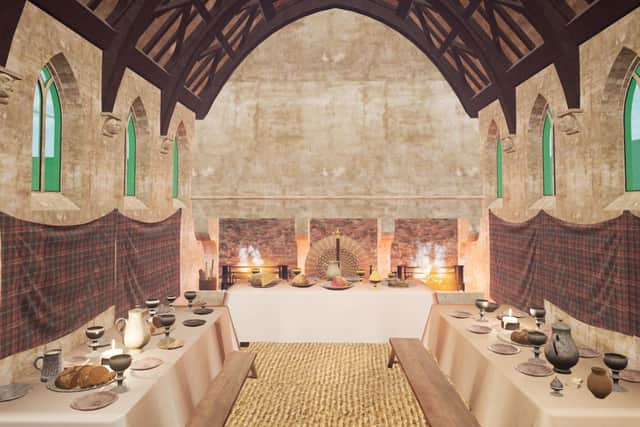Video: Inside the medieval home of Scotland's Lords of the Isles


Experts at the University of St Andrews have used cutting-edge gaming technology to digitally resurrect the ancient buildings, which stood on islands in Loch Finlaggan on Islay.
The reconstruction represents Finlaggan in the early 15th century, when it was the administrative and ceremonial centre of the Lordship of the Isles.
Advertisement
Hide AdAdvertisement
Hide AdThe project has been realised by the university’s Open Virtual Worlds Team and spin-out company Smart History, in collaboration with the Finlaggan Trust.


The visualisation is based on major archaeological work by the National Museum of Scotland, led by Dr David Caldwell.
Documentary research and comparison with other late-medieval sites has been used to ensure the reconstruction is as accurate as possible.
University of St Andrews computer scientist and historian Dr Bess Rhodes, who worked on the reconstruction, said: “Finlaggan was an amazing place to recreate digitally.
“Even today the islands of Eilean Mor and Eilean na Comhairle are beautiful places, and in the Middle Ages they were the site of a remarkable complex of buildings which blended local traditions with wider European trends.


“The work by Dr David Caldwell and the Finlaggan Archaeological Project has transformed our understanding of this site – giving us a glimpse of the relative comfort in which the Lords of the Isles and their followers lived, pampering their dogs with decorative collars, and enjoying music, imported wine and board games.”
During the Middle Ages the Lords of the Isles ruled the Hebrides and parts of mainland Scotland and Ulster in Ireland.
Traditionally the Lordship was held by the MacDonald family.
Advertisement
Hide AdAdvertisement
Hide AdHowever, disputes in the 15th century prompted attempts by theScottish kings to curtail the clan’s influence.
James IV sent a military expedition to sack Finlaggan in the 1490s, leaving many of the buildings in ruins.
The site sank into relative obscurity over the following centuries.
The reconstruction shows what it may have looked like in its glory days, when it was the seat of the Council of the Lords of the Isles and the scene of inauguration ceremonies for the chiefs.
“Despite its impact on the shaping of Scottish culture, Finlaggan and the Lordship remains little-known to many,” said Dr Ray Lafferty, secretary of Finlaggan Trust.
“With this virtual-reality reconstruction we hope to give some sense of the site at the zenith of its power, when MacDonald rule stretched from the Glens of Antrim in Ireland to Buchan in the north-east of Scotland.”
The reconstruction will be available as an interactive virtual-reality experience at the Finlaggan Trust’s visitor centre on Islay. There is also a virtual reality app and an online video.